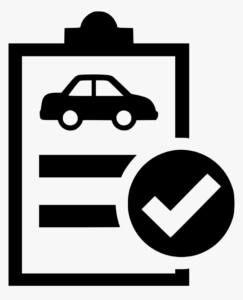The G test, also referred to as the Level 2 road test or G2 road test, constitutes the second of two road tests that new drivers must undergo as part of Ontario’s graduated licensing system. Upon passing the G test, drivers acquire full Class G driving privileges. The entire graduated licensing process typically spans between 20 and 24 months. The progression is as follows: G1 license: The initial license granted to new drivers, enabling them to drive with restrictions and under the supervision of a fully-licensed driver. G2 license: The subsequent level attained after 8 or 12 months of practice with the G1 license. G2 drivers can operate a vehicle without a supervising driver but are subject to certain conditions. Full Class G license: Following a year of practice with the G2 license, drivers become eligible to take the G test. Successful completion of this test grants permission to drive any car, van, or small truck with specific weight restrictions related to towing and trailering. It’s important to note that a G license is a prerequisite for operating other vehicle types such as buses, transport trucks, and heavy truck and trailer combinations, excluding motorcycles. G Test Evaluation:
The examiner employs a point-based system to assess your driving performance. A minimum score of 80 percent is necessary for passing. A single severe infraction can result in immediate failure, irrespective of your overall score. Common errors include failure to check blind spots, improper signaling, and ineffective merging. Even in the absence of minor mistakes, a serious error (e.g., failure to yield to an emergency vehicle or running a red light) can lead to automatic failure. Cost and Booking:
The fee for the G test in Ontario is $91.25, inclusive of tax. In the event of failure, the fee must be paid again for a subsequent attempt. Once you have completed the mandatory 12 months of practice with your G2 license, it’s time to schedule your G road test. Examiner Feedback:
In the event of passing on your initial attempt, the examiner will provide feedback regarding areas for improvement. Understanding and addressing your errors during the test aids in preventing their recurrence in future attempts. Remember, consistent practice, thorough preparation, and maintaining composure are pivotal to succeeding in your G test endeavors. Best of luck as you progress toward obtaining your full driver’s license!
The Ontario government requires you to have mastered these techniques while driving with your G2 driver’s license.
Here are five G driving test tips to include in your checklist:
By incorporating these tips into your preparation for the Ontario G road test, you can enhance your chances of success and impress your driving examiner.
Vehicle Requirements for Your Road Test. Before your road test, the driver examiner must perform a basic vehicle check to ensure your vehicle is fit for the purpose. The driver examiner may request your assistance to ensure your vehicle is safe (i.e., trying the turn signals, brake lights, windshield, tire Pressure , damage etc.) When you arrive for your test, please park your vehicle and go inside the DriveTest Centre to check-in. Most centers have a self-serve kiosk for check-in; see a customer service agent if yours does not. After check-in, return to your vehicle and wait for the driver examiner. If your driver examiner does not arrive at your vehicle within 30 minutes of your appointment time, please return to the customer service dispatch counter directly.
